conflicts
World War I

Uniform of Don Murphy
The United States entered World War I on April 6, 1917 when Congress voted to declare war on Germany. U. S. forces, known as the American Expeditionary Forces, were under the command of Army General John J. Pershing.
The armistice was signed by Germany on November 11, 1918. A formal state of war between the two sides persisted for another seven months, until the signing of the Treaty of Versailles with Germany on June 28, 1919.
The armistice was signed by Germany on November 11, 1918. A formal state of war between the two sides persisted for another seven months, until the signing of the Treaty of Versailles with Germany on June 28, 1919.
World War II
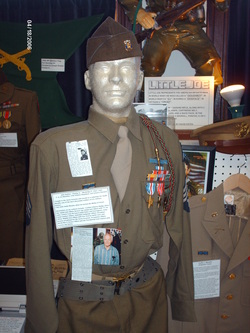
Uniform of John Rodino
The World War II officially began when Germany attacked Poland causing France and the United Kingdom to declare war on Germany on September 1, 1939. The United States entered World War II when the Japanese attacked Pearl Harbor, Hawaii on December 7, 1941. World War II was a two theater war, one in Europe against Germany and Italy. And one in the Pacific against Japan. U. S. and combined allied forces in Europe were under the command of American General Dwight D. Eisenhower. Combined allied forces in the Pacific were commanded by American General Douglas MacArthur. The war in Europe ended on May 7, 1945. After the dropping of two atomic bombs, one on Hiroshima and one on Nagasaki, Japan signed surrender documents on September 2, 1945.
Korean War
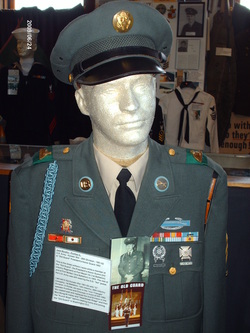
Uniform of museum founding president Jack Murphy
The Korean War, (often called the Korean Conflict), began on June 25, 1950 when North Korean forces crossed the 38th Parallel and attacked U. S. and South Korean forces. After more than three years of fighting, on July 27, 1953 North Korean representatives signed an Armistice. The Korean War was the first war that jet aircraft and helicopters played a major role.
Vietnam War
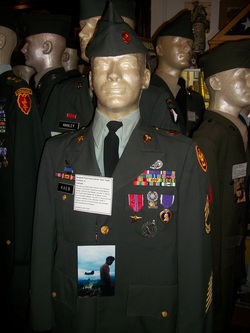
Uniform of Dan Kaeb
U. S. involvement in Vietnam began in early 1959. Over the years the administrations of Eisenhower, Kennedy, Johnson and Nixon increased U. S. combat operations until late 1969. On January 15, 1973, Nixon announced the suspension of offensive action against North Vietnam. The Paris Peace Accords on "Ending the War and Restoring Peace in Vietnam" were signed on January 27, 1973, officially ending direct U.S. involvement in the Vietnam War.
The Cold War
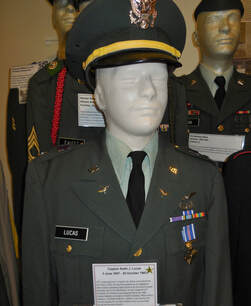
Uniform of Capt Keith J. Lucas. KIA 1983 Grenada
The "Cold War" lasted between 1946 and 1991, primarily between the United States and the Soviet Union, Communist China and other Communist countries around the globe. There were several armed conflicts during this period, including both the Korean and Vietnam Wars, operations in Grenada, Panama, Lebanon as well as several others. One of the final conflicts during the Cold War was Operation Desert Storm in 1990-1991.
Post Cold War Operations
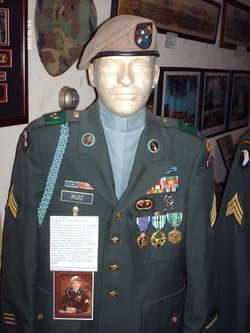
Uniform of Iraq and Afghanistan veteran Juan Ruiz
After the Cold War ended, there were still conflicts around the world. Somalia, Bosnia, Kosovo, to name a few. Following the attacks on September 11, 2001, the Global War on Terrorism began. The United States sent troops to Afghanistan in 2001 and to Iraq in 2003.